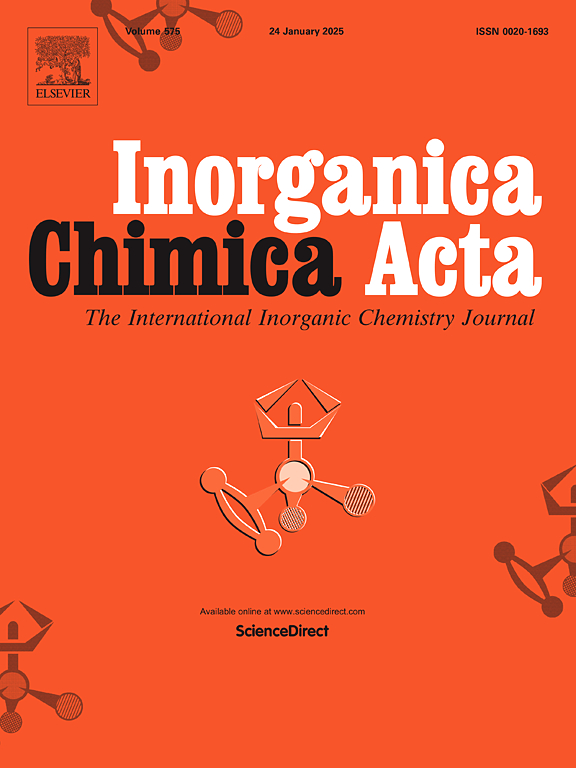Crystal structure, bioactivity and in silico binding simulations of NiII and ZnII Thiosemicarbazone complexes
IF 3.2
3区 化学
Q2 CHEMISTRY, INORGANIC & NUCLEAR
引用次数: 0
Abstract
NiII (1) and ZnII (2) complexes of thiosemicarbazones were synthesized and characterized using elemental analysis, FT-IR spectroscopy, mass spectrometry and X-ray crystallography. Both the complexes crystalized in monoclinic crystal system with space group P1 21/n 1 (1) and I 2/a (2). The geometries confirmed from X-ray structure for 1 and 2 are square planar and distorted tetrahedral respectively. The ADME predictions indicate that the designed molecules are good for oral intake as the overall log P is around 2 and less than 5 with predicted intestinal absorption of >80 % except complex 1. Highest docking score of −8.5 Kcal/mol obtained for complex 2 through in silico docking studies, which was evaluated in colorectal cancer as EGFR inhibitor gave indication of possibility of high anti-cancer activity of this molecule against HCT 116 cell line. Complex 2 has shown good in-vitro anticancer activity (IC50 = 2.46 ± 0.07) against HCT 116 cell line and antitubercular activity (MIC = 1.6 μg/mL) against Mycobacterium tuberculosis H37RV strain as predicted by docking studies.

NiII和nini硫代氨基脲配合物的晶体结构、生物活性和硅结合模拟
合成了硫代氨基脲类化合物NiII(1)和ZnII(2)配合物,并用元素分析、FT-IR光谱、质谱和x射线晶体学对其进行了表征。两种配合物均为单斜晶系,空间群分别为P1 21/n 1(1)和I 2/a(2)。由x射线结构确定的1和2的几何形状分别为方形平面和畸变四面体。ADME预测表明,所设计的分子适合口服,其总体logp约为2,小于5,除复合物1外,预计肠道吸收率为80%。通过硅对接研究,复合物2的对接得分最高,为−8.5 Kcal/mol,在结直肠癌中作为EGFR抑制剂进行评估,表明该分子对HCT 116细胞系可能具有高的抗癌活性。对接研究表明,配合物2对HCT 116细胞株具有良好的体外抗癌活性(IC50 = 2.46±0.07),对结核分枝杆菌H37RV株具有良好的体外抗结核活性(MIC = 1.6 μg/mL)。
本文章由计算机程序翻译,如有差异,请以英文原文为准。
求助全文
约1分钟内获得全文
求助全文
来源期刊

Inorganica Chimica Acta
化学-无机化学与核化学
CiteScore
6.00
自引率
3.60%
发文量
440
审稿时长
35 days
期刊介绍:
Inorganica Chimica Acta is an established international forum for all aspects of advanced Inorganic Chemistry. Original papers of high scientific level and interest are published in the form of Articles and Reviews.
Topics covered include:
• chemistry of the main group elements and the d- and f-block metals, including the synthesis, characterization and reactivity of coordination, organometallic, biomimetic, supramolecular coordination compounds, including associated computational studies;
• synthesis, physico-chemical properties, applications of molecule-based nano-scaled clusters and nanomaterials designed using the principles of coordination chemistry, as well as coordination polymers (CPs), metal-organic frameworks (MOFs), metal-organic polyhedra (MPOs);
• reaction mechanisms and physico-chemical investigations computational studies of metalloenzymes and their models;
• applications of inorganic compounds, metallodrugs and molecule-based materials.
Papers composed primarily of structural reports will typically not be considered for publication.
 求助内容:
求助内容: 应助结果提醒方式:
应助结果提醒方式:


